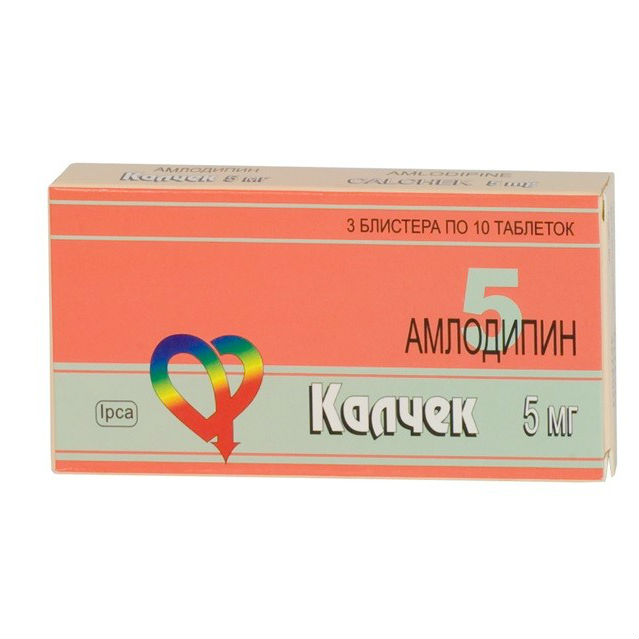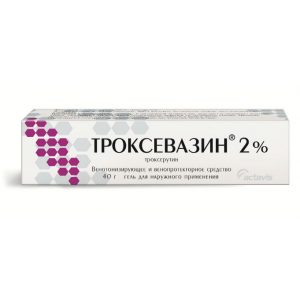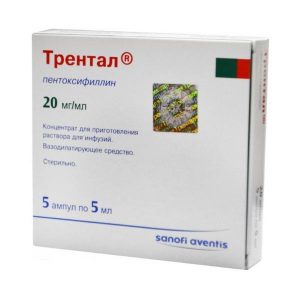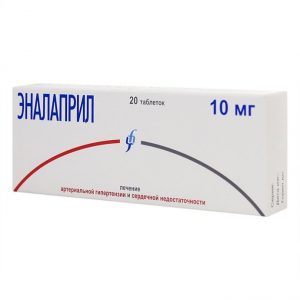Description
Pharmacological action
Amlodipine is a derivative of dihydropyridine. By binding to dihydropyridine receptors, it blocks “slow” calcium channels, inhibits the transmembrane transition of calcium into the smooth muscle cells of the heart and blood vessels (more to the smooth muscle cells of blood vessels than to cardiomyocytes). It has a hypotensive and antianginal effect.
The mechanism of the hypotensive effect of amlodipine is due to a direct relaxing effect on the smooth muscles of blood vessels.
Amlodipine reduces myocardial ischemia in the following two ways:
1. Expands arterioles and, thus, reduces the overall peripheral resistance (afterload), while the heart rate is practically unchanged, which leads to a decrease in energy consumption and myocardial oxygen demand.
2. Expands the coronary and peripheral arteries and arterioles in both normal and ischemic zones of the myocardium, which increases the oxygen supply to the myocardium in patients with vasospastic angina (Prinzmetal angina) and prevents the development of coronary spasm caused by smoking.
In patients with arterial hypertension, a single daily dose of KalchekaВ® provides a decrease in blood pressure (BP) for 24 hours (both in the “lying” and “standing” positions). Due to the slow onset of action, amlodipine does not cause a sharp decrease in blood pressure.
In patients with angina pectoris, a single daily dose of the drug increases the time it takes to exercise, delays the development of another attack of angina pectoris and ST segment depression (by 1 mm) during exercise, reduces the frequency of angina attacks and the consumption of nitroglycerin.
Use in patients with coronary heart disease (CHD)
In patients with cardiovascular disease (including coronary atherosclerosis with damage to one vessel and up to stenosis of 3 or more arteries and carotid atherosclerosis) who have had myocardial infarction, percutaneous transluminal angioplasty arteries (TLPs) or those suffering from angina pectoris, the use of KalchekВ® prevents the development of a thickening of the intima-media of the carotid arteries, stroke, TLP, coronary artery bypass grafting, reduces the number of hospitalizations for an ode to unstable angina and the progression of chronic heart failure (CHF), reduces the frequency of interventions, aimed at restoring the coronary flow.
Use in patients with heart failure
Callec® does not increase the risk of death or the development of complications and deaths in patients with chronic heart failure (CHF) of functional class III – IV (NYHA) treated with digoxin, diuretics and ACE inhibitors. In patients with CHF III – IV functional class according to TNRF of non-ischemic etiology, when Kalchek® is used, there is a possibility of pulmonary edema. Kalcek® does not have any adverse effect on the metabolism and concentration of blood lipids.
Pharmacokinetics
After oral administration, amlodipine is slowly absorbed (about 90%) from the gastrointestinal tract. Absolute bioavailability is 64–80%, the maximum concentration in the blood serum is observed after 6–9 hours. Equilibrium concentrations are reached after 7-8 days of drug therapy. Eating does not affect the absorption of amlodipine. The average distribution volume is 21 l / kg body weight, which indicates that most of the drug is in the tissues, and a relatively smaller amount is in the blood.
Most of the drug in the blood (97%) binds to plasma proteins.
Amlodipine is metabolized in the liver to form inactive metabolites.
After a single oral dose, the elimination half-life (T1 / 2) averages 35 hours. About 60% of the ingested dose is excreted by the kidneys mainly in the form of metabolites, 10% – unchanged, and 20-25% – with bile through the intestine.
In patients with arterial hypertension T1 / 2 – 48 hours, in elderly patients (over 65 years), the excretion of amlodipine is slowed down (T1 / 2 – 65 hours) compared with young patients, however, this boundary has no clinical significance.
In patients with hepatic insufficiency, an extension of T1 / 2 is assumed, and with prolonged administration, the cumulation of the drug in the body will be higher (T1 / 2 up to 60 hours).
Renal failure does not significantly affect the kinetics of amlodipine.
The drug crosses the blood-brain barrier. With hemodialysis, it is not removed.
Indications
– Arterial hypertension (in monotherapy or in combination with other antihypertensive agents)
– stable exertional angina, vasospastic angina (Prinzmetal angina) (in monotherapy or in combination with other antianginal agents).
Contraindications
– hypersensitivity to amlodnpin and / or other components of the drug, as well as to other derivatives of dihydropyridine
– severe arterial hypotension (systolic blood pressure less than 90 mm Hg)
– unstable angina pectoris (angina pectoris) severe stenosis of the aortic orifice
– age up to 18 years (efficacy and safety have not been established).
Precautions: impaired liver function, sinus node weakness syndrome (severe bradycardia, tachycardia), chronic heart failure of non-ischemic etiology (NYHA class III – IV functional class), arterial hypotension, aortic stenosis, mitral stenosis, hypertrophic obstructive cardiomyopathy, acute myocardial infarction (and within 1 month after), old age.
Composition
Each tablet contains as an active substance: amlodipine besilate, which is equivalent to 5 mg amlodipine.
Excipients: corn starch, calcium hydrogen phosphate, talc, colloidal silicon dioxide, sodium carboxymethyl starch, magnesium stearate.
Dosage and administration
Inside, the initial dose for the treatment of hypertension and angina pectoris is 5 mg of the drug once a day. The dose can be maximally increased to 10 mg once a day.
With arterial hypertension, the maintenance dose may be 5 mg per day.
Dose changes are not required when given simultaneously with thiazide diuretics, beta-blockers, or angiotensin converting enzyme (ACE) inhibitors.
No dosage changes are required in patients with renal failure.
Dose adjustment is usually not required in patients with impaired liver function.
In elderly patients it is recommended to use a medium therapeutic dose, dose adjustment is not required.
Side effects of
From the cardiovascular system: palpitations, marked decrease in blood pressure, peripheral edema (swelling of the ankles and feet), rarely – cardiac arrhythmias (bradycardia, ventricular tachycardia, atrial flutter, myocardial infarction, myocardial infarction orthostatic hypotension, vasculitis, very rarely – the development or worsening of heart failure, extrasystole, migraine.
From the central nervous system: headache, dizziness, fatigue, sensation of heat and flushing of blood to the face, drowsiness, mood changes, cramps, rarely – loss of consciousness, hypesthesia, nervousness, paresthesia, peripheral neuropathy, tremor, vertigo asthenia, malaise, fainting, insomnia, emotional lability, depression, anxiety, unusual dreams, very rarely – ataxia, apathy, agitation, amnesia.
From the digestive system: nausea, vomiting, epigastric pain, rarely – increased activity of “liver” transaminases, hyperbilirubinemia, jaundice (due to cholestasis), pancreatitis, dry mucous membranes of the mouth, thirst, hepatitis, flatulence, gingival hyperplasia, gum hyperplasia, diarrhea, anorexia, very rarely – gastritis, increased appetite.
From the hemopoietic organs: very rarely – thrombocytopenic purpura, leukopenia, thrombocytopenia.
From the respiratory system: shortness of breath, rhinitis, very rarely – cough.
From the genitourinary system: rarely – pollakiuria, painful urination, nocturia, sexual dysfunction (including decreased potency) very rarely – dysuria, polyuria.
From the skin: very rarely – xeroderma, dermatitis, purpura, impaired skin pigmentation.
Allergic reactions: pruritus, rash (including erythematous, maculopapular rash, urticaria), angioedema, erythema multiforme.
From the musculoskeletal system: rarely – arthralgia, muscle cramps, arthrosis, back pain, myalgia (with prolonged use) very rarely – myasthenia gravis.
Other: rarely – gynecomastia, gyneururicemia, increase / decrease in body weight, hyperglycemia, visual impairment, diplopia, conjunctivitis, eye pain, ringing in the ears, dyspnea, nosebleeds, increased sweating very rarely – cold, sticky sweat, parosmia, taste disorder sensations, violation of accommodation, xerophthalmia.
Overdose
Symptoms: marked decrease in blood pressure, tachycardia, excessive peripheral vasodilation (risk of severe and persistent arterial hypotension, including with the development of shock).
Treatment: gastric lavage, administration of activated carbon (especially in the first 2 hours after an overdose), maintaining the function of the cardiovascular system, monitoring of heart and lung function, elevated limbs, controlling the volume of circulating blood and diuresis. To restore vascular tone – the use of vasoconstrictors (in the absence of contraindications to their use) to eliminate the effects of calcium channel blockade – intravenous administration of calcium gluconate. Hemodialysis is ineffective.
Active ingredient
Amlodipine
Terms
pharmacy leave with prescription
The dosage form of
tablet




